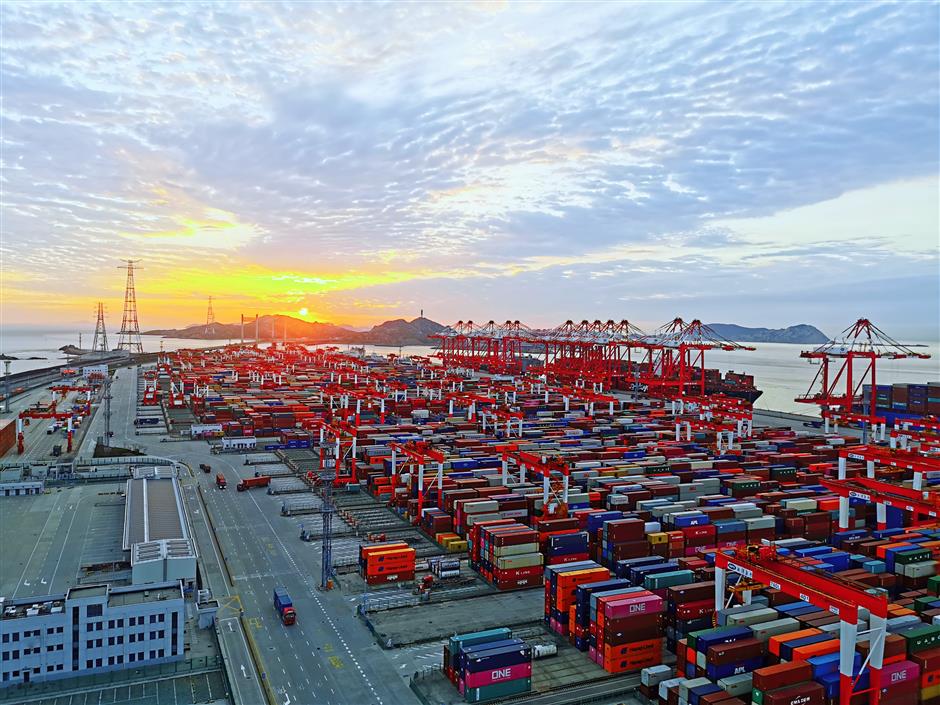Digital twin enhances Shanghai's transportation system
The Huangpu River, airports, ports, as well as construction sites in Shanghai have been incorporated into the city's digital-twin world of the local transportation system, according to the Shanghai Urban Operation and Management Center.
Featuring artificial reality, embodied and tangible interaction, as well as artificial intelligence technologies, the Huangpu River cruise tour now has developed its digital version, Shanghai Jiushi Group, operator of the Huangpu River cruise tour services, revealed.
In this digital world, tourists can travel through time and space between today's Bund and old Shanghai online, it added.

A screen shot of the digital-twin Huangpu River.
The "digital twin" concept refers to a virtual platform or model that accurately reflects the real-time physical objects and system in the real world. This means that every element and object in the city can be found in its digital reflection in a digital system by simple clicks on a screen.
It is also a response to China's 14th Five-Year Plan (2021-2025), which has listed digital twin construction as an important part of improving the city's management capacity.

Shanghai's airports have applied the digital-twin technology to operate flights.
The city's airports and ports have switched into a digital and smart version with their digital reflection on the city's urban management system.
In the future, more convenient services will be available to passengers at Shanghai's airports, such as unimpeded airport access by only using their digital ID.
And the airports have adopted the concept in the management of flights, terminals as well as parking apron.

The Yangshan Port is equipped with a smart and digital system.
The Yangshan Ports Phase IV Automation Terminal has taken the lead in launching a digital-twin system, through which production managers and equipment operators can use mobile devices anytime and anywhere to view the production and operation status of the port.
The digital-twin system can also be used in simulating the port's production plans in different weather conditions and modeling the construction of new port.
The concept has also been brought into the city's construction sites.
As a highlight, the system can help warn and evacuate on-site workers amid inclement weather, such as heavy rains and typhoons.
The digital-twin concept has been adopted by local transportation authorities to build an advanced transport system since last year, on which, traffic lights, detailed traffic flows, emergency situations and road problems can be accessed at any time.
For example, the 28-year-old Yangpu Bridge has a digital twin, which is operated like a "smart brain."
When people cross the bridge in a car, the information is displayed on a digital system, which also carries a weighing function to detect overloaded vehicles.
The bridge is one of the main spans across the Huangpu River, connecting Yangpu District and the Pudong New Area.
Since the digital system was launched in January, the bridge's problem disposal rate has increased from 90 percent to 100 percent, which means that potential risks to the bridge were almost all found and cleared.
In addition, there are almost no hazardous chemical vehicles passing through the bridge, thanks to the detection and warning functions of its digital twin. And the number of overloaded vehicles has also dropped rapidly to less than 10 instances per month.

The digital Yangpu Bridge.
Shanghai has been striving to build and optimize its digital brain.
The advanced digital-twin concept is expected to be applied in more fields, including infrastructure, historical buildings, communities, cultural tourism, education, medical care, emergency response, as well as fire and rescue field, according to the urban operation and management center.
















